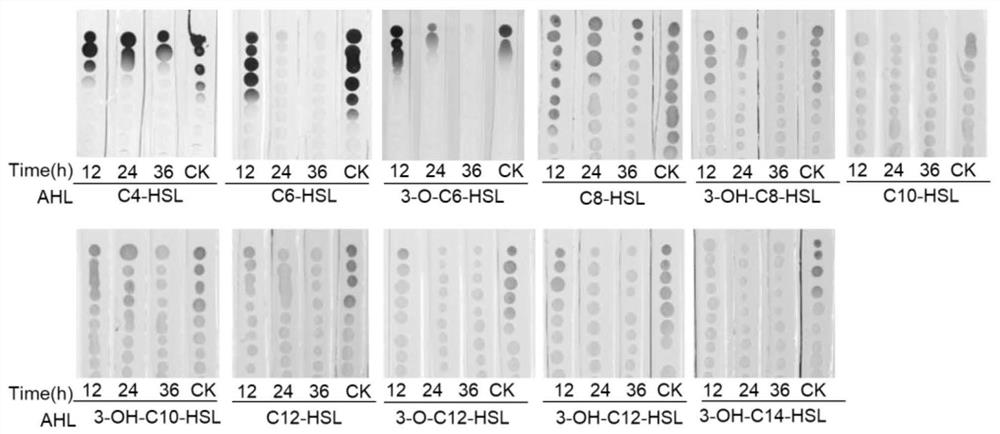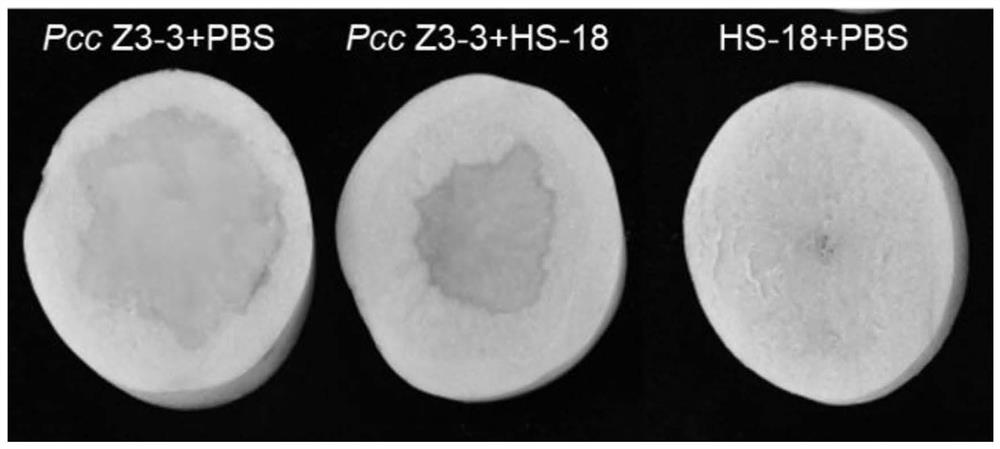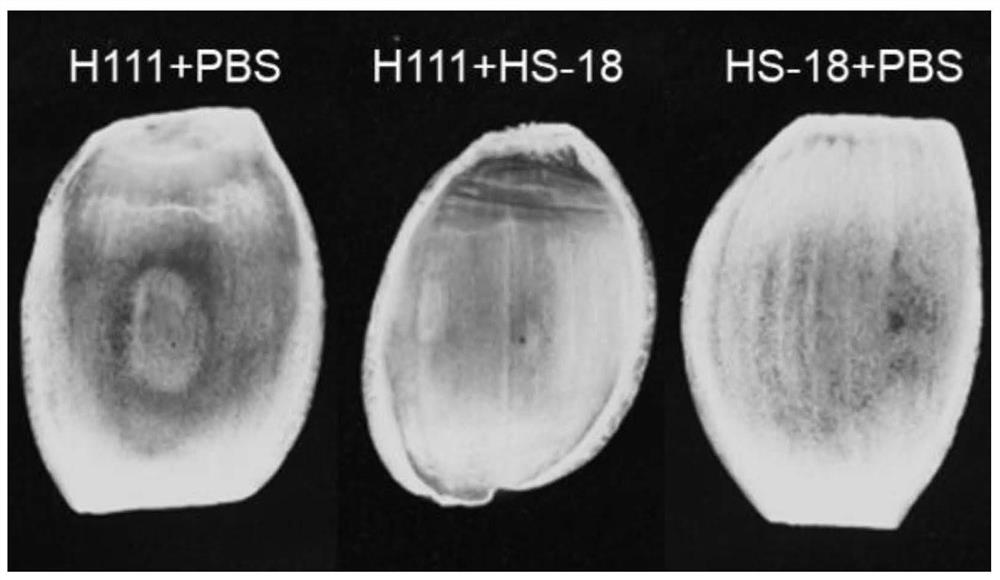Application of Pseudomonas nitroreductors hs-18 in the prevention and treatment of pathogenic bacteria mediated by ahls
A technology of Pseudomonas and C6-HSL, which is applied in the fields of application, chemicals for biological control, botany equipment and methods, etc., can solve the problems that are rarely studied, achieve good degradation activity, and the degradation effect is efficient and significant Effect
- Summary
- Abstract
- Description
- Claims
- Application Information
AI Technical Summary
Problems solved by technology
Method used
Image
Examples
Embodiment 1
[0032] Example 1 Degradation system setting of Pseudomonas nitroreducens HS-18 to AHLs
[0033] First, use LB liquid culture based on 30 ℃, 200rpm constant temperature shaker overnight culture strain HS-18 to obtain OD 600 =0.5 seed solution, take 300 μl seed solution and add the same volume of fresh LB liquid medium, and add MOPS with a final concentration of 50 mM and AHLs with different carbon chain lengths and different substituents at a final concentration of 10-50 μM to prepare a degradation system (The appropriate concentration of different AHLs signals is selected according to the different intensities of color development of the reporter strain), and cultured at 30°C, 200rpm in a constant temperature shaker for 12h, 24h, and 36h, and the group without adding bacterial suspension was used as a control. The signals of exogenously added AHLs were extracted with the same volume of ethyl acetate as that of the degradation system.
[0034] Table 1 lists the AHLs used to ex...
Embodiment 2
[0038] Example 2 Quantitative detection of short-chain AHLs using reporter strain Violet bacteria (Chromobacterium violaceum) CV026
[0039] Violet bacteria CV026 was activated on LB solid plates, and CV026 was cultured overnight in LB liquid medium. Prepare LB solid plates and cut into 0.8 cm wide strips of interphase agar. Take 10 μl of the ethyl acetate extract from the degradation system described in Example 1 and spot it on the top of the LB agar strip, and spot a row of reporter strain droplets of similar size below the sample loading place. After the samples and the reporter strains were dripped dry, the plates were incubated in a constant temperature incubator at 28°C for 16 hours. The area where AHLs diffused could induce violaceum CV026 to produce violacein and make the cells appear purple. The distance of the purple reporter strain CV026 is proportional to the content of AHLs to be detected. The result is as figure 1 It shows that the bacterial strain HS-18 in t...
Embodiment 3
[0040] Example 3 Quantitative detection of medium and long chain AHLs using reporter strain Agrobacterium tumefaciens NT1 (traR, tra::lacZ749)
[0041] Agrobacterium tumefaciens NT1 was activated on LB solid plates, and NT1 was cultured overnight in LB liquid medium containing kanamycin at a final concentration of 50 μg / ml. Prepare MM solid plates with X-gal (5-bromo-4-chloro-3-indole-β-D-galactopyranoside) added at a final concentration of 40 μg / ml and cut into 0.8 cm wide interphase agar strips . Take 10 μl of the ethyl acetate extract from the degradation system described in Example 1 and spot it on the top of the MM agar strip, and spot a row of reporter strain droplets of similar size below the sample loading place. After the samples and the reporter strains were dripped dry, the plates were wrapped in tin foil and placed in a constant temperature incubator at 28°C in the dark for 16 hours. The area where AHLs spread can induce Agrobacterium tumefaciens NT1 to produce β...
PUM
 Login to View More
Login to View More Abstract
Description
Claims
Application Information
 Login to View More
Login to View More - R&D
- Intellectual Property
- Life Sciences
- Materials
- Tech Scout
- Unparalleled Data Quality
- Higher Quality Content
- 60% Fewer Hallucinations
Browse by: Latest US Patents, China's latest patents, Technical Efficacy Thesaurus, Application Domain, Technology Topic, Popular Technical Reports.
© 2025 PatSnap. All rights reserved.Legal|Privacy policy|Modern Slavery Act Transparency Statement|Sitemap|About US| Contact US: help@patsnap.com



